Crocosmia spp.
Showy and vibrant, fiery Crocosmia flowers are ideal for the late summer garden, blooming for weeks when many other perennials are fading and spent.
Summer-flowering corms, they quickly form vibrant, spikey clumps of upright, strappy foliage topped with graceful wands of tubular blooms in brilliant hues of orange, red, scarlet, and yellow.
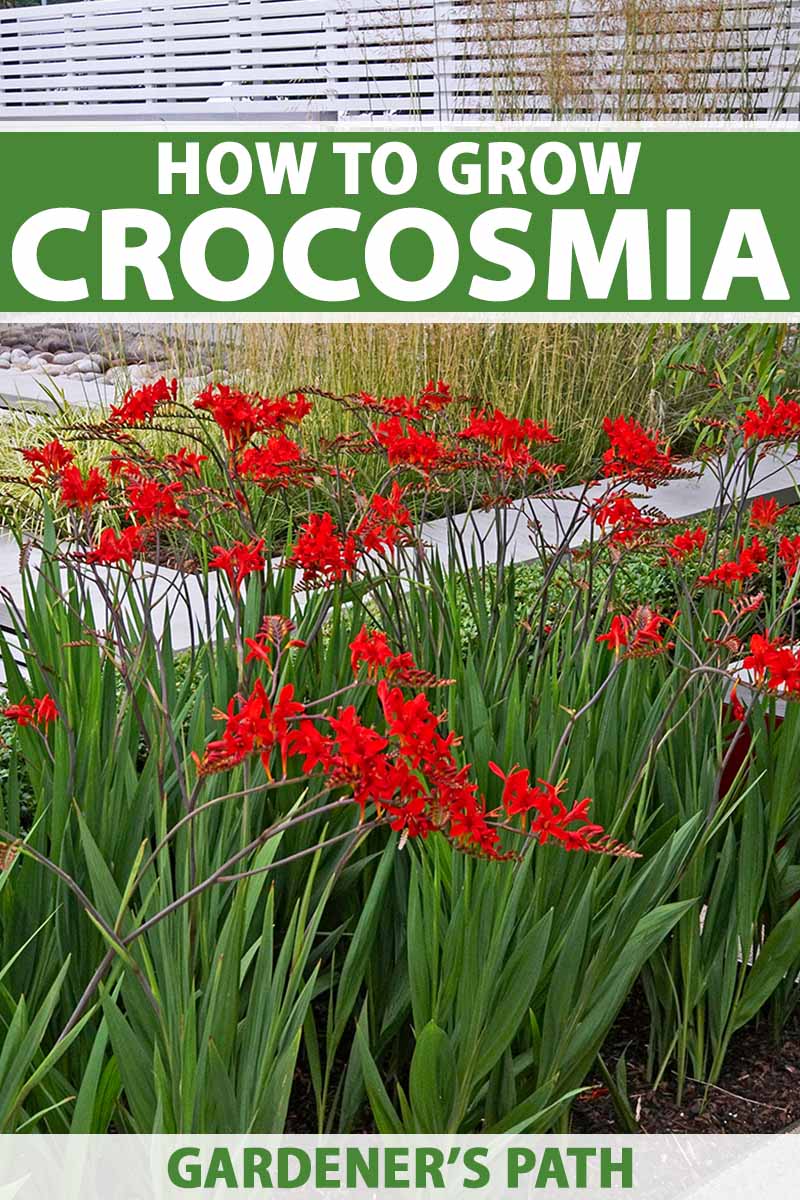
We link to vendors to help you find relevant products. If you buy from one of our links, we may earn a commission.
Blooms open progressively from the bottom of the spike, and immediately attract hummingbirds, butterflies, and other pollinators, while deer and rodents leave them alone.
Easily grown, crocosmia is an excellent choice for beds, borders, drifts, and islands, or in patio planters and window boxes.
The pretty spikes are also long-lasting and make an eye-catching addition to floral arrangements.
And in fall, the foliage and seed heads turn attractive, sometimes burnished, shades of copper, tan, and rust.
To add this unique charmer to your garden, read on for all the details on how to cultivate crocosmia flowers.
Here’s a quick preview of everything we’ll cover up ahead:
What You’ll Learn
What Is Crocosmia?
Crocosmia is a genus of summer-flowering corms in the iris family, Iridaceae, with eight species native to South Africa, parts of east and central Africa, Sudan, and Madagascar.
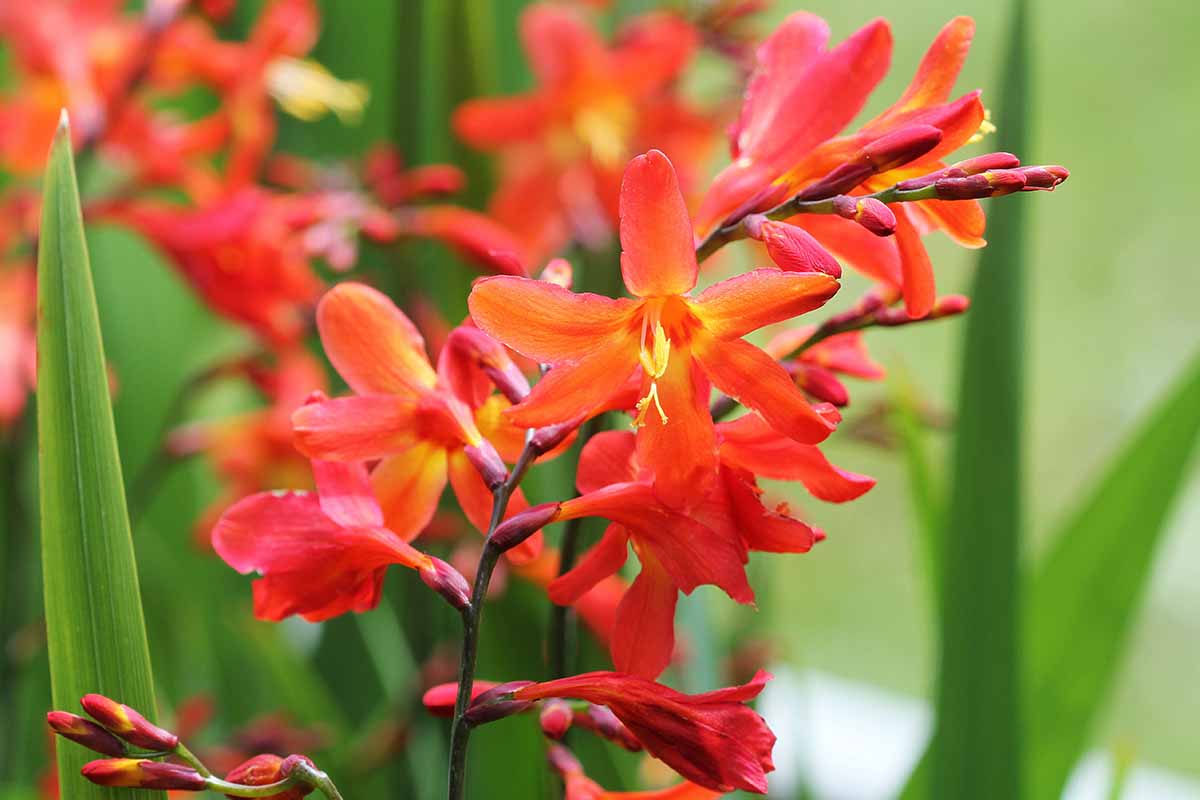
Also known as coppertips, falling stars, and montbretia, their natural habitat ranges from desert conditions to woodlands and they like to inhabit areas with some available ground moisture, such as locations beside marshes, ponds, and streams.
Small star-shaped blooms blaze in hot shades of orange, red, and yellow, with attractive bi- and tricolored blends as well. Buds form long, pretty spikes atop elegantly arching, wiry stems, with buds at the base opening first.

The deep green, lance-like foliage creates attractive, upright clumps with the bright blooms floating over top.
Corms are spring-planted and flower in their second or third year. They multiply readily and quickly form chains, producing new growth that develops into attractive and ornamental clumps.
The name “crocosmia” comes from a combination of Greek words for saffron (krokos) and smell (osme) – apparently, when dried petals are dipped in water, they release a saffron-like fragrance.
Tough and resilient perennials, they are hardy in USDA Zones 6 to 9, with some hybrid cultivars like ‘Lucifer’ hardy down to Zone 5.
It should also be noted that in certain regions like the UK and New Zealand, some varieties of the hybrid Crocosmia × crocosmiiflora are considered invasive and should be planted with care.
Sow corms in areas where they can spread freely without interfering in other plantings, or you can easily restrict their spread with container plantings.
Crocosmia Plant Propagation
Crocosmia multiplies readily, forming new corms in a joined stack or string, one on top of another. And unlike many other bulbs, the parent doesn’t die off after producing bulblets.
You can also purchase corms from your local garden center, plant nursery, or online.
By Division
To divide, lift clumps in spring and gently pull apart corm strings with your fingers.
For new plantings, use the newest and most vigorous corms, or the top two or three on the string. Older corms with waning vigor can be disposed of.
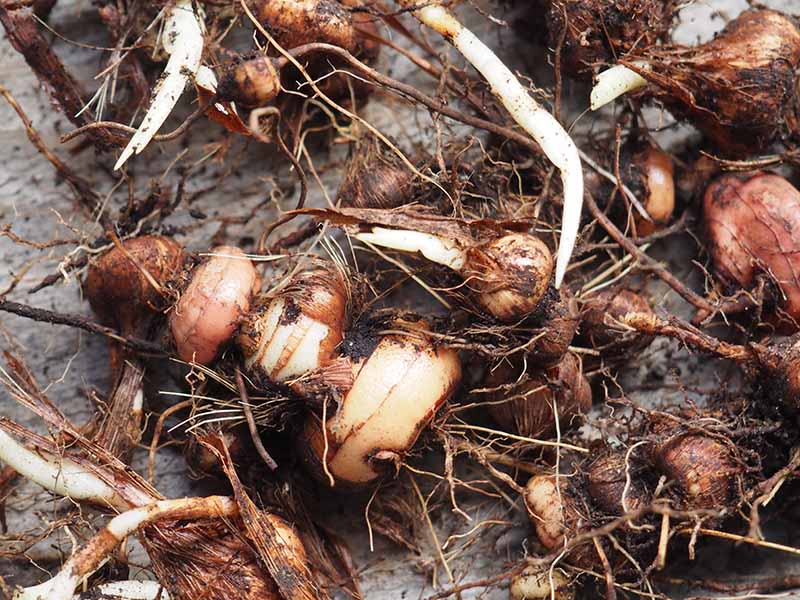
To plant corms, loosen and dig the soil in a hole about four to six inches deep.
Plant with the flat root end down, nestling them lightly into the soil three to four inches deep and about six inches apart.
It may be tempting to plant the smallish corms closer together, but they spread quickly – planting too closely means you’ll have to divide overgrown clumps sooner.
Backfill with soil and lightly firm in place. Water gently to settle.
For container plantings, space corms closer together, or two to four inches apart.
Use containers with drainage holes. I like to add a two-inch layer of drainage material such as broken pottery or pebbles to the bottom.
Fill to four or five inches below the rim of the pot with well-draining and humus-rich potting soil amended with grit or sand for drainage. Mix in some bone meal, according to package instructions, for healthy root formation.
Nestle the corms in place, root side down.
Top with three to four inches of soil and lightly firm in place.
Water gently and deeply to settle the corms. After new growth emerges, allow the top inch of soil to dry between watering but don’t allow the soil to completely dry out.
From Seed
Montbretia can also be propagated by sowing seed, although cultivars may be sterile or fail to grow true with their parents’ characteristics.
Collect seeds in autumn after plants start to turn brown and seed heads crack open.
Crocosmia seed germinate best while fresh and should be planted promptly.
Sow seeds half an inch deep in trays of seed-starting soil and water lightly, taking care to avoid disturbing the seeds.
Place trays in bright, indirect light in a spot with temperatures in the range of 60 to 70°F.
Keep the soil lightly moist and seeds should germinate in two to three weeks. After germination, keep the trays in the same bright, indirect light, and maintain even moisture in the soil.
Transplant seedlings in late spring when they have four to six sets of true leaves.
Transplanting
To transplant seedlings or container-grown plants from the nursery, first prepare the soil as discussed above for planting corms.
Dig a hole the same size as the container in which the plant is currently growing. Gently remove the plant from its pot, and set it in the hole at the same depth.
Backfill with soil, tamping it down to remove air pockets, and water in well.
How to Grow Crocosmia Flowers
Crocosmia does best in a fertile and lightly moist but well-draining soil with a neutral pH of 6.0 to 8.0 in a full to partial sun location.
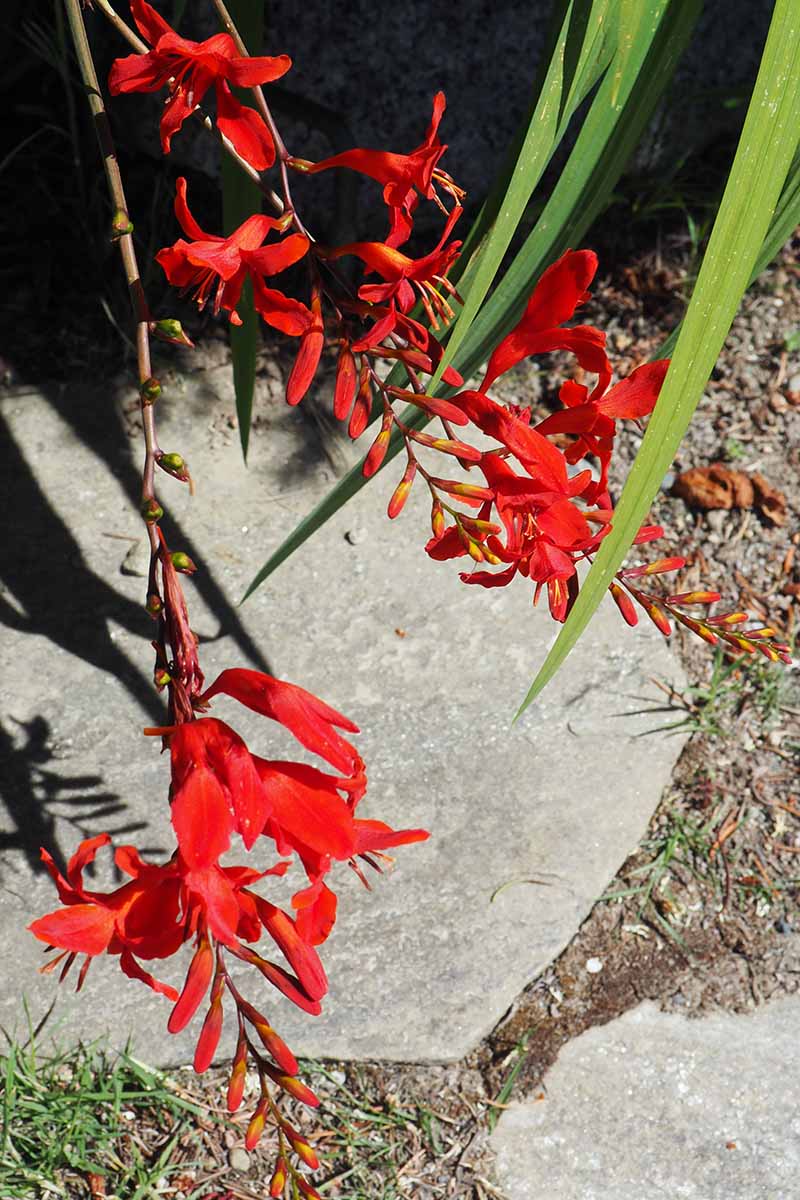
These plants tolerate light shade but bud set is best in full sun with consistently moist soil – avoid planting in hot, dry locations.
To plant corms, loosen and dig the soil in a hole about four to six inches deep.
If the soil is slow draining, amend the planting site with coarse landscape sand, granite chips or grit, or pea gravel.
Enrich the soil with aged compost or well-rotted manure, then mix in a handful of bone meal for healthy root formation.

In the absence of rain, water regularly during the growing season to keep the soil evenly moist but not waterlogged. Aim to provide an inch of water per week.
In dry summers, provide plants with a two- to four-inch layer of mulch such as shredded bark, compost, leaf mold, or straw to help retain soil moisture.
Growing Tips
Easily grown, the following tips can help you get the most from your crocosmia plants:
- Grow in a full to part sun location.
- Amend soil if needed to ensure it is well-draining.
- Maintain even moisture in the soil.
Maintenance
After flowering, remove stems by cutting close to the foliage where they emerge. Allow a few seed heads to remain in place if you want to collect seeds.
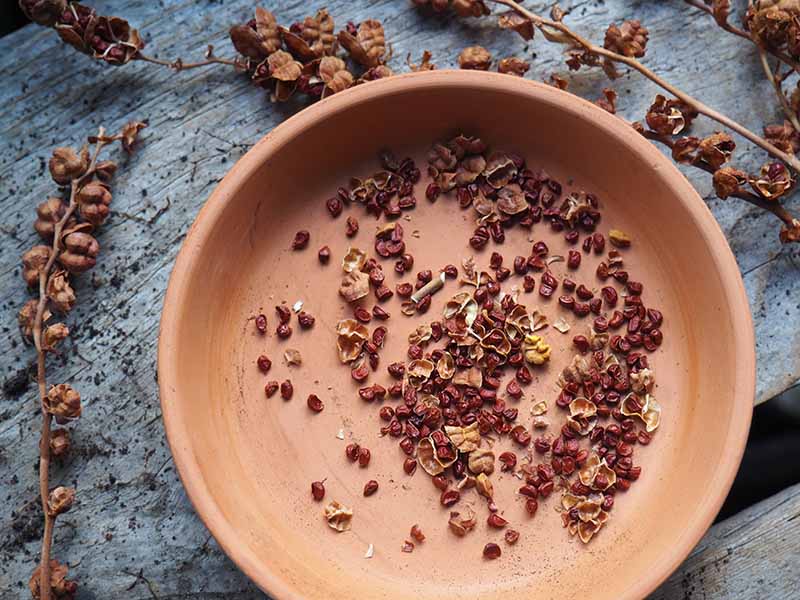
The spent foliage can be allowed to die down to form its own natural winter mulch.
If you prefer a tidier look, once the foliage dries and turns brown, trim back leaf fans to two to four inches.
In early spring, remove all remaining foliage by tugging lightly to remove leaves at the base and rake up any mulch materials.
After new growth emerges, fertilize with a two-inch layer of compost.
You can also use a water-soluble formula or slow-release pellets designed for bulbs, like this Pennington 15-10-10 NPK formula for blooms and bulbs available in five-pound bags at Home Depot.
Pennington Ultragreen Fertilizer
Divide congested or overgrown clumps every three to five years to rejuvenate plants and encourage abundant bud set.
In colder regions with consistent freezing temperatures in winter, mulch corms with pine boughs or straw to protect them from heaving in freeze/thaw cycles.
Crocosmia Cultivars to Select
Crocosmia’s fiery tones are a sure way to warm up any garden space. Here are a few popular cultivars to light a spark!
Emily McKenzie
A bold pick, ‘Emily McKenzie’ features striking flowers of saffron orange with a strong maroon stripe and golden yellow throats that rise gracefully above upright clumps of deep green, strappy foliage.
A superb choice for perennial beds and borders, containers, drifts, and patio planters, this cultivar is a profuse bloomer that starts in midsummer and continues into fall.
The clumping plants grow 24 to 36 inches tall with a spread of 12 to 24 inches and they’re hardy in Zones 6 to 9.
Corms are available from Nature Hills Nursery.
Lucifer
A true stage-stealer, ‘Lucifer’ has diabolically bright, cardinal red flowers that seem to glow from within, blooming from midsummer into fall in full to partial sun.
The colorful, long wands float above deep green, strappy leaves in textured, spiky clumps that grow two to four feet tall.
Lucifer’ is among the hardiest of all cultivars. Reliable in Zones 5 to 9, many growers in Zone 4 also find success if they’re planted in a protected area and mulched heavily for winter.
‘Lucifer’ corms in packs of 20, 40, and 100 are available at Eden Brothers.
George Davidson
A showy perennial featuring golden yellow flowers, ‘George Davidson’ is perfect for hot color schemes and blooms from midsummer into mid-fall.
An excellent choice for beds, borders, and containers, the upright, sword-like foliage adds textured vertical interest in clumps 18 to 24 inches tall with a spread of 12 to 18 inches.
Plants are hardy in Zones 6 to 9.
‘George Davidson’ corms are available at Nature Hills Nursery.
Orange Pekoe
‘Orange Pekoe’ refreshes the late summer garden with a long-lasting show of full-bodied, vivid flowers in a tricolor blend of sizzling orange, red, and yellow.
A superb choice for heat waves of color when mass planted in beds, containers, and drifts.
‘Orange Pekoe’ grows 24 to 30 inches high and reblooms lightly with deadheading. It’s hardy in Zones 6 to 9.
Three-packs of ‘Orange Pekoe’ corms are available at Burpee.
Tai Pan
The saturated, corn yellow flowers of ‘Tai Pan’ add vibrant pops of color to the landscape, and float above dense clumps of attractive, lance-like foliage.
Long lasting, blooms appear from midsummer into early autumn and make a striking choice for foundations, islands, patio planters, and naturalized drifts, or in floral arrangements.
Plants grow in clumps 22 to 26 inches tall and 18 to 24 inches wide. These are hardy in Zones 6 to 9.
‘Tai Pan’ corms are available in three-packs at Burpee.
Managing Pests and Disease
Generally pest-free and disease resistant, hardy crocosmia can suffer infestations of red spider mites, sapsuckers that attack the leaves.
Damage includes mottling and leaf drop, and can be fatal in extreme cases.
Spray plants with an insecticidal soap or neem oil to clear up infestations.
Bonide neem oil concentrate is available in pint, quart, and gallon sizes at Arbico Organics.
It is important to avoid oversaturated conditions which can cause the corms to rot. Make sure that the planting site is well-draining and take care not to overwater your plants.
Best Uses for Crocosmia Flowers
These brightly colored flowers add a vibrant flair to beds, borders, islands, and naturalized drifts where the attractive vertical foliage adds interest even when the plants are not in flower.
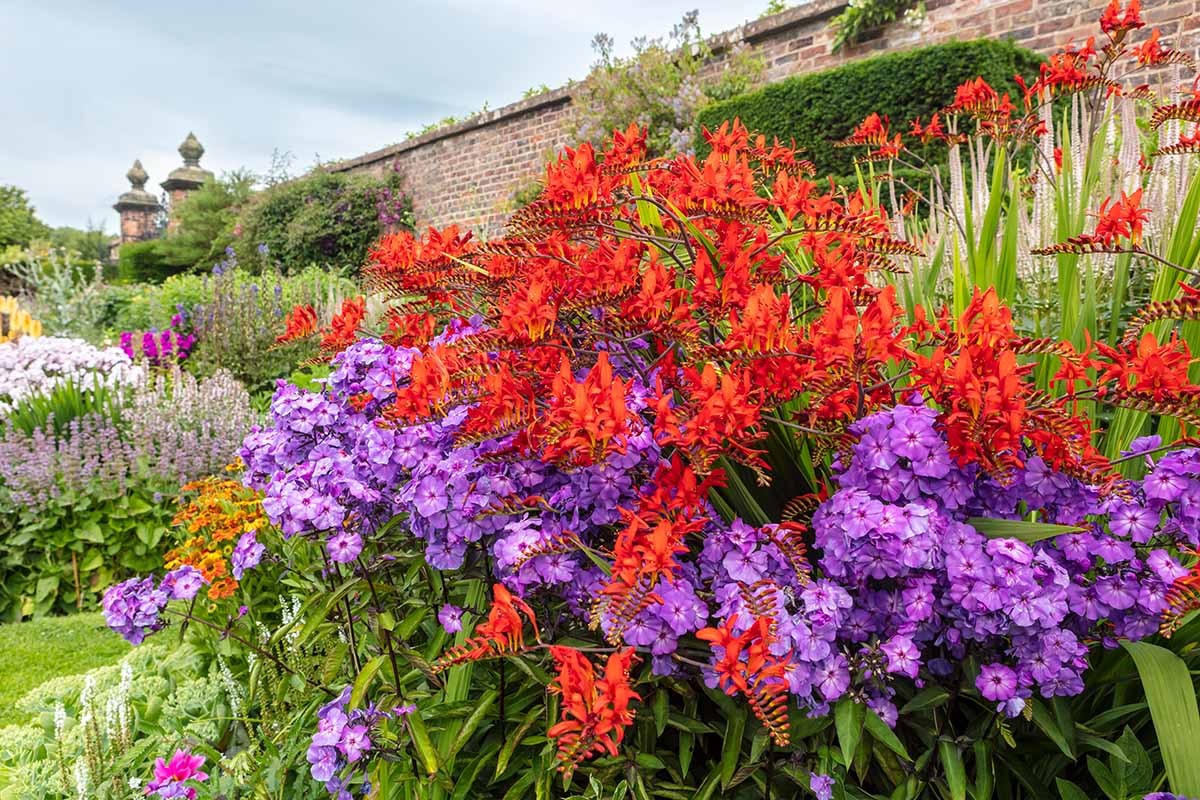
They also grow well in containers, patio planters, and window boxes, and they’re a must-have for cutting gardens.
Mass planting is the best way to get a big display of color, and to really make their bright colors pop, place crocosmia in front of rows of dark conifers, fences, or walls.
Quick Reference Growing Guide
| Plant Type: | Flowering corm | Flower/Foliage Color: | Orange, red, yellow/green |
| Native to: | Madagascar, parts of central Africa, South Africa, Sudan | Maintenance: | Low |
| Hardiness (USDA Zones): | 5-9, depending on variety | Water Needs: | Moderate |
| Bloom Time: | Midsummer | Soil Type: | Fertile |
| Exposure: | Full sun to part shade | Soil pH: | 6.0-8.0 |
| Time to Maturity: | 1-2 years (corms), 2-3 years (seeds) | Soil Drainage: | Well-draining |
| Spacing: | 4-6 inches | Attracts: | Butterflies, hummingbirds, other pollinators |
| Planting Depth: | 3-4 inches (corms), 1/4 inches (seeds) | Uses: | Beds, borders, containers, cut arrangements, drifts, islands |
| Height: | 24-36 inches | Family: | Iridaceae |
| Spread: | 18-24 inches | Genus: | Crocosmia |
| Common Pests and Diseases: | Red spider mites; bulb rot | Species: | Aurea, fucata, masoniorium, paniculata, pearsei, pottsii |
Long-Lasting Fiery Colors
For long lasting fiery colors to brighten the late season garden, crocosmia is sure to please.
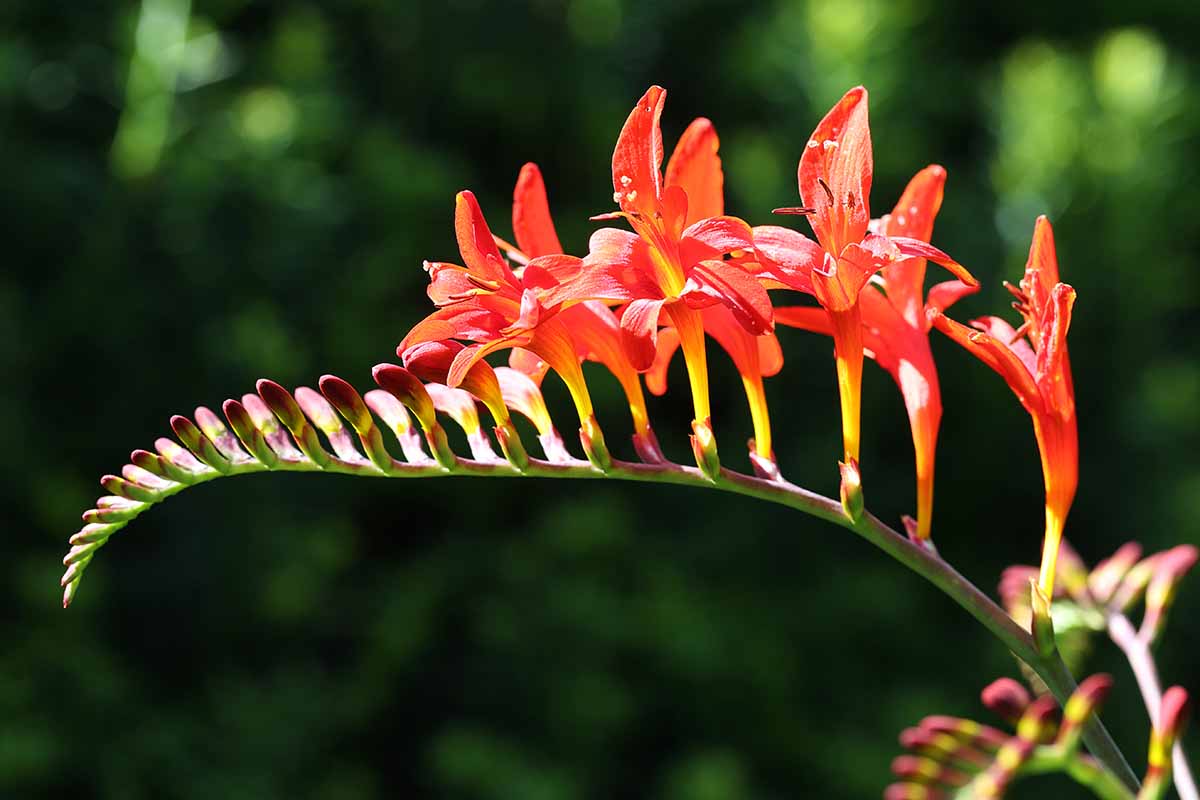
Mass plant for the greatest visual impact, and divide the upright, spiky clumps every few years to ensure vibrant growth and the best flower production.
And be sure to plant plenty in the cutting garden for indoor floral arrangements!
Do you folks have a favorite cultivar growing in your garden? Let us know in the comments section below.
For more information on beautiful flowers in the Iridaceae family, check out these growing guides next:



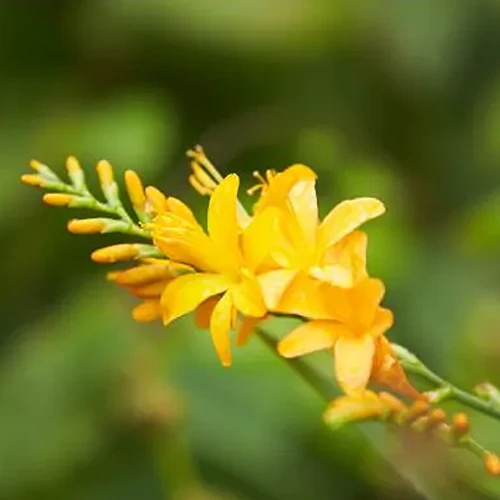
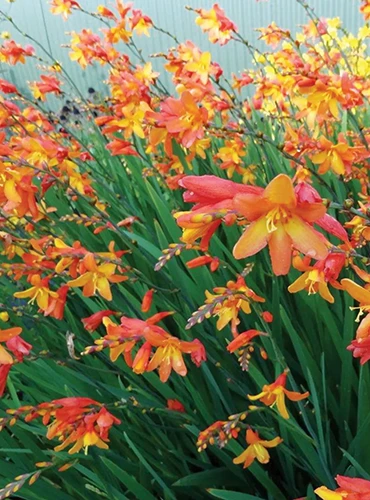
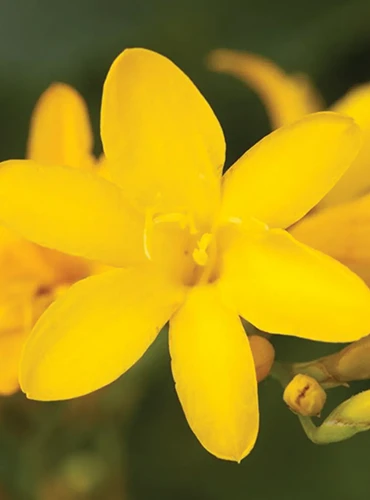
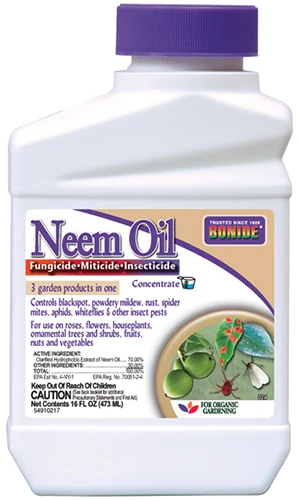
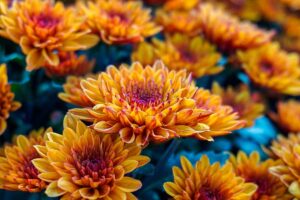

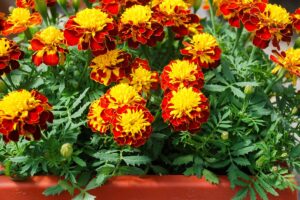
They flop over. I love them but have to plan support when the heavy flower spike wants to lay on the ground.
Hey Lesley, there are a couple of reasons for flopping…
The foliage and flower stems can flop when planted in too much shade – move to a full sun location if they receive less than six hours of direct sunlight each day.
And overcrowding can also cause plants to flatten out. If this is the case, lift and divide the corms in late winter to restore upright growth.
Thanks for your comments!